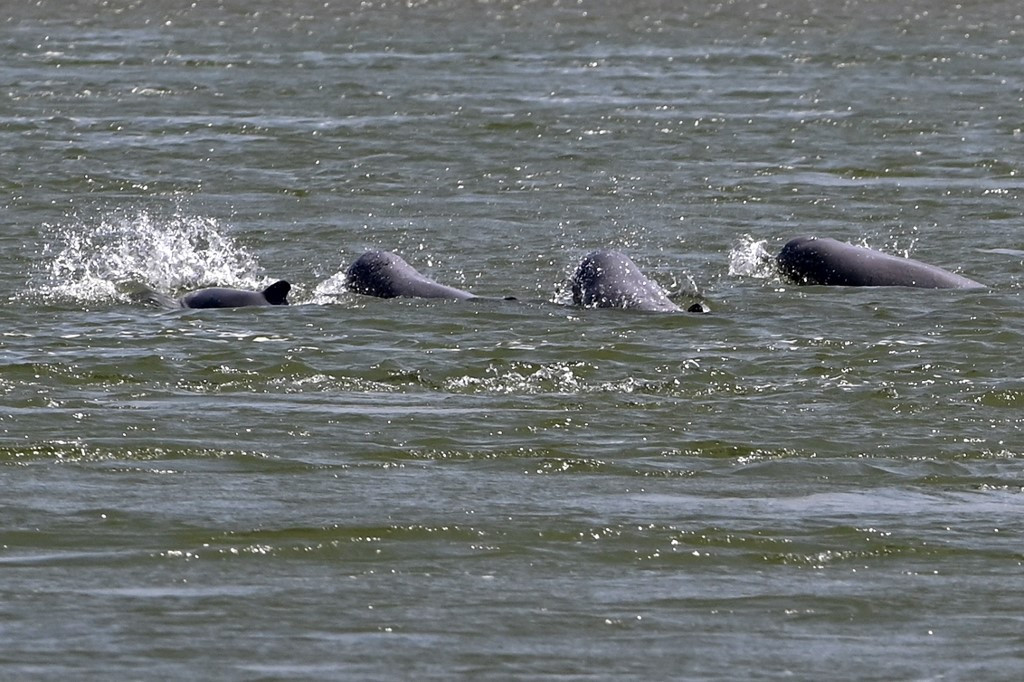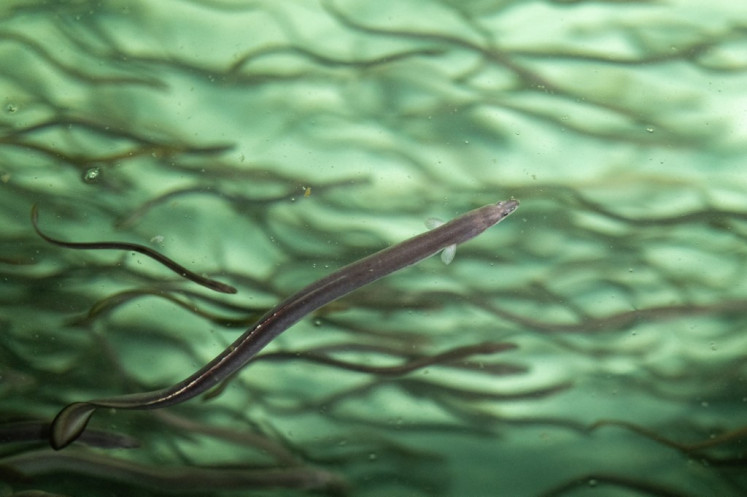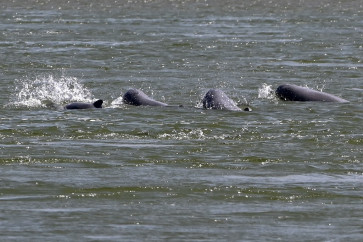Popular Reads
Top Results
Can't find what you're looking for?
View all search resultsPopular Reads
Top Results
Can't find what you're looking for?
View all search resultsThe battle to save Cambodia's river dolphins from extinction
The thrilling sight of Irrawaddy dolphins may soon be no more than a memory, as numbers of the endangered mammals dwindle despite efforts to preserve them.
Change text size
Gift Premium Articles
to Anyone
B
ulging grey heads break the turbid waters of the Mekong River in Cambodia as a pod of rare Irrawaddy dolphins surfaces to breathe, drawing excited murmurs from tourists watching from nearby boats.
The thrilling sight may soon be no more than a memory, as numbers of the endangered mammals dwindle despite efforts to preserve them.
Cambodia has announced tough new restrictions on fishing in the vast river to try and reduce the number of dolphins killed in nets.
But in a country with limited financial resources, it's a huge challenge to enforce the rules on a river hundreds of metres wide that is dotted with islets and lined with dense undergrowth.
"We fear we cannot protect them," says river guard Phon Pharong during a patrol searching for illegal gillnets.
Gillnets -- vertical mesh nets left in the water for long periods -- trap fish indiscriminately and are the main cause of death for dolphins in the Mekong, according to conservationists.
Pharong is one of more than 70 guards who patrol a 120-kilometre (75-mile) stretch of the Mekong from northeastern Kratie province to close to the Laos border.



















